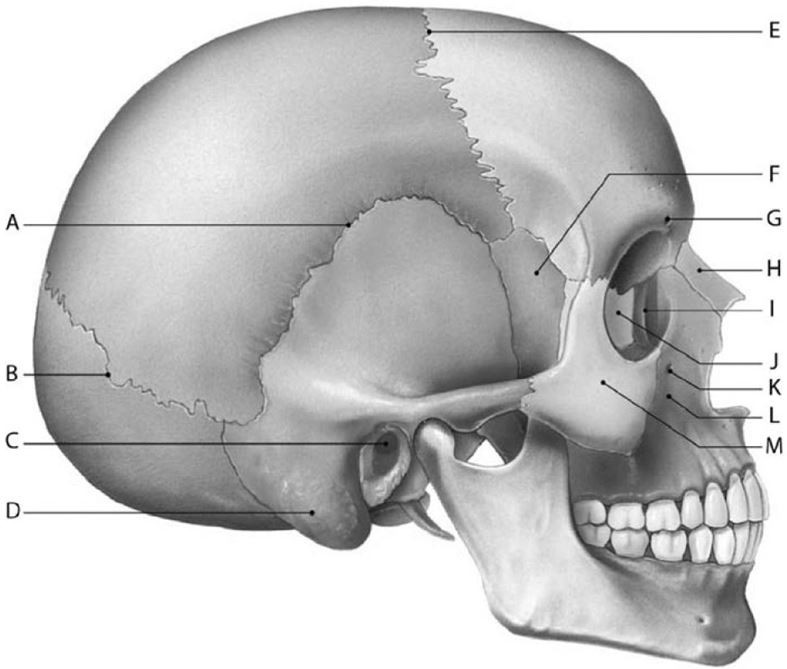Which of the following does not produce chewing movements of the mandible?
A. Masseter
B. Lateral pterygoid
C. Medial pterygoid
D. Thyrohyoid
E. Temporalis
D. Thyrohyoid
You might also like to view...
Answer the following statements true (T) or false (F)
1. Because lymph vessels are very low-pressure conduits, movements of adjacent tissues are important in propelling lymph through the lymphatics. 2. Lymphoid tissue is mainly reticular connective tissue. 3. Lymphocytes reside temporarily in lymphoid tissue, then move to other parts of the body. 4. An infected lymph gland is called a bubo. 5. When tissues are inflamed, lymphatic capillaries develop openings that permit uptake of large particles such as cell debris, pathogens, and cancer cells.
Structure C is the

A) sella turcica.
B) styloid process.
C) mastoid process.
D) external auditory meatus.
E) coronoid process.
Which of the following transporters are known to transport thyroid hormones into target cells?
A) Mineralocorticoid receptor B) MCT8 C) Sodium-iodide symporter D) TRPV6 E) CaSR (calcium sensing receptor)
Which of the following is not true of inspiration?
A. Inspiratory reserve volume is much lower than expiratory reserve volume. B. Enlargement of the thoracic cavity reduces the pressure in the lungs, leading to air entering the thoracic cavity. C. Inspiration results from contraction of the diaphragm and the external intercostal muscles. D. The anatomic dead space is about 30% of the inhaled tidal volume. E. All of these are true of inspiration.